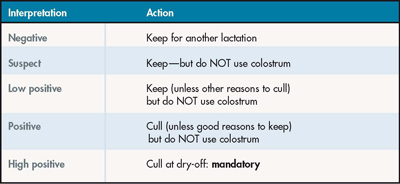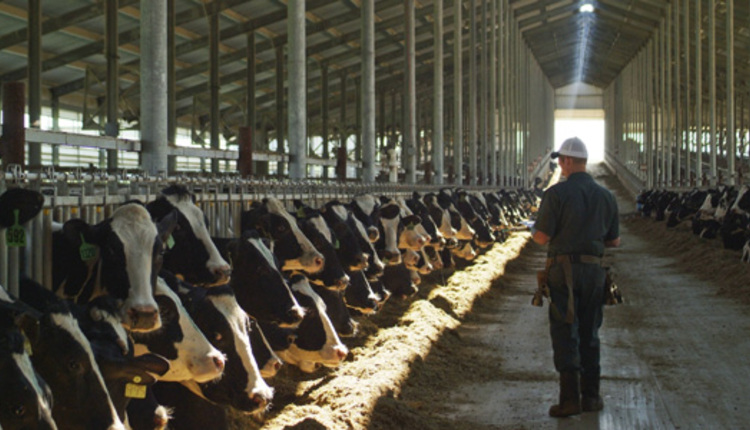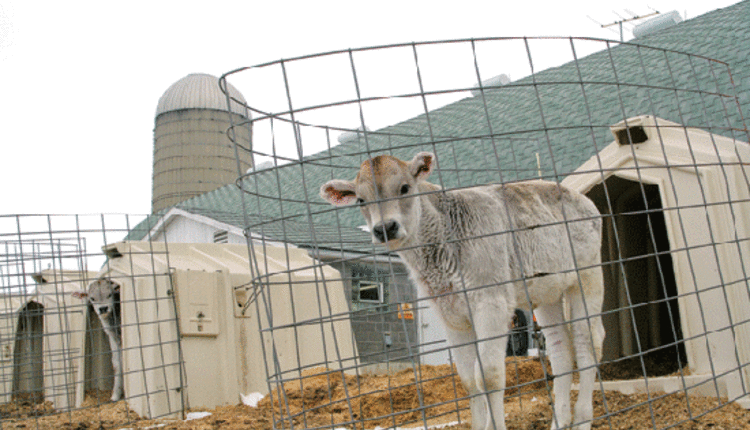How do diagnostic tests fit into a Johne's disease control program? Experts agree that it's prohibitively expensive to do a fecal culture or polymerase chain reaction (PCR) test on every cow. It does not make sense to spend more money to control a problem than the problem costs in the first place. However, this isn't the case for a chronic contagious infectious disease like Johne's.

It is vital to look long-term (roughly a 10-year time frame) at cost-benefit of control programs, including diagnostic testing. Failure to recognize the infection in a herd and take positive actions to control it today most likely will mean a much higher herd infection rate and significantly higher cost to the herd in the future.
A low infection rate in a herd (less than 5 percent ELISA-positive) is not nearly as costly as a high infection rate (greater than 10 percent ELISA-positive) which can and has put herds out of business. Therefore, the main message for commercial dairy producers is to immediately:
We have learned from careful cost-benefit analysis that lower-cost, lower-accuracy tests like ELISA on blood or milk samples are more cost effective for commercial dairy operations than are higher-cost, higher-accuracy tests such as fecal culture and PCR (genetics-based tests). Now we also know that it is not necessary to cull each and every test-positive cow from a herd. The new approach is to cull only the cows with a high-test result (strong positives) and to keep, but label and carefully manage, cows with low- to medium-level test results.
With this approach, you can keep test-positive cows in the herd as income generators while also avoiding infection transmission. Of course, if herd owners want to be more hard-hitting in controlling Johne's disease, they simply can cull more aggressively, including cows with medium- or high-level ELISA results.
Use of low-cost quantitative tests coupled with culling only strong-positive cows before their next lactation was a key and novel aspect of the Healthy Cows for a Healthy Industry program. This field trial showed that this approach can affordably and successfully control Johne's disease.

Lower cost tests like ELISA on blood or milk samples are more cost effective for commercial dairy operations.
Click here to return to the Animal Care E-Sources

It is vital to look long-term (roughly a 10-year time frame) at cost-benefit of control programs, including diagnostic testing. Failure to recognize the infection in a herd and take positive actions to control it today most likely will mean a much higher herd infection rate and significantly higher cost to the herd in the future.
A low infection rate in a herd (less than 5 percent ELISA-positive) is not nearly as costly as a high infection rate (greater than 10 percent ELISA-positive) which can and has put herds out of business. Therefore, the main message for commercial dairy producers is to immediately:
- Confirm whether your herd is infected - if yes . . .
- Start an effective control program immediately!
We have learned from careful cost-benefit analysis that lower-cost, lower-accuracy tests like ELISA on blood or milk samples are more cost effective for commercial dairy operations than are higher-cost, higher-accuracy tests such as fecal culture and PCR (genetics-based tests). Now we also know that it is not necessary to cull each and every test-positive cow from a herd. The new approach is to cull only the cows with a high-test result (strong positives) and to keep, but label and carefully manage, cows with low- to medium-level test results.
With this approach, you can keep test-positive cows in the herd as income generators while also avoiding infection transmission. Of course, if herd owners want to be more hard-hitting in controlling Johne's disease, they simply can cull more aggressively, including cows with medium- or high-level ELISA results.
Use of low-cost quantitative tests coupled with culling only strong-positive cows before their next lactation was a key and novel aspect of the Healthy Cows for a Healthy Industry program. This field trial showed that this approach can affordably and successfully control Johne's disease.

Lower cost tests like ELISA on blood or milk samples are more cost effective for commercial dairy operations.











